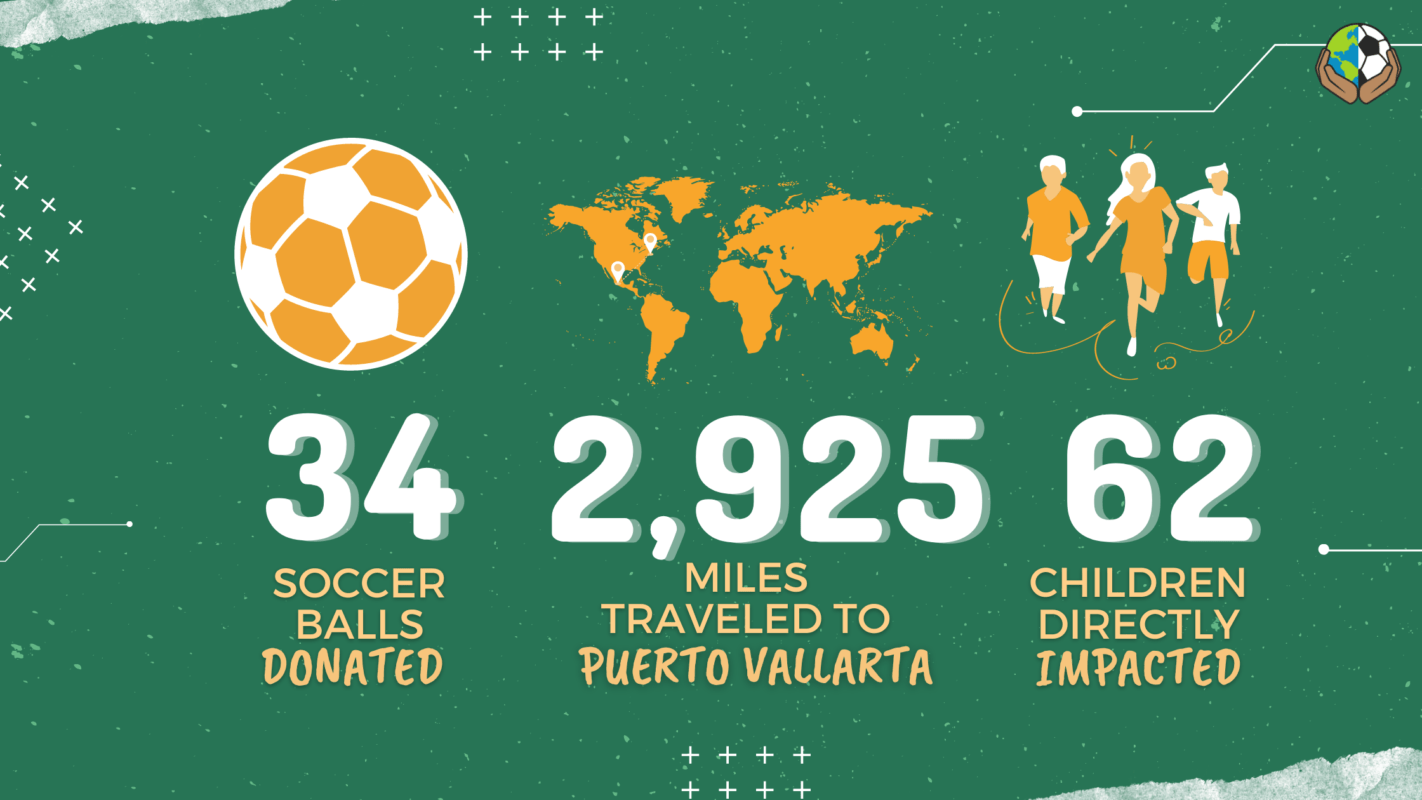Puerto Vallarta, Mexico (Part 1)
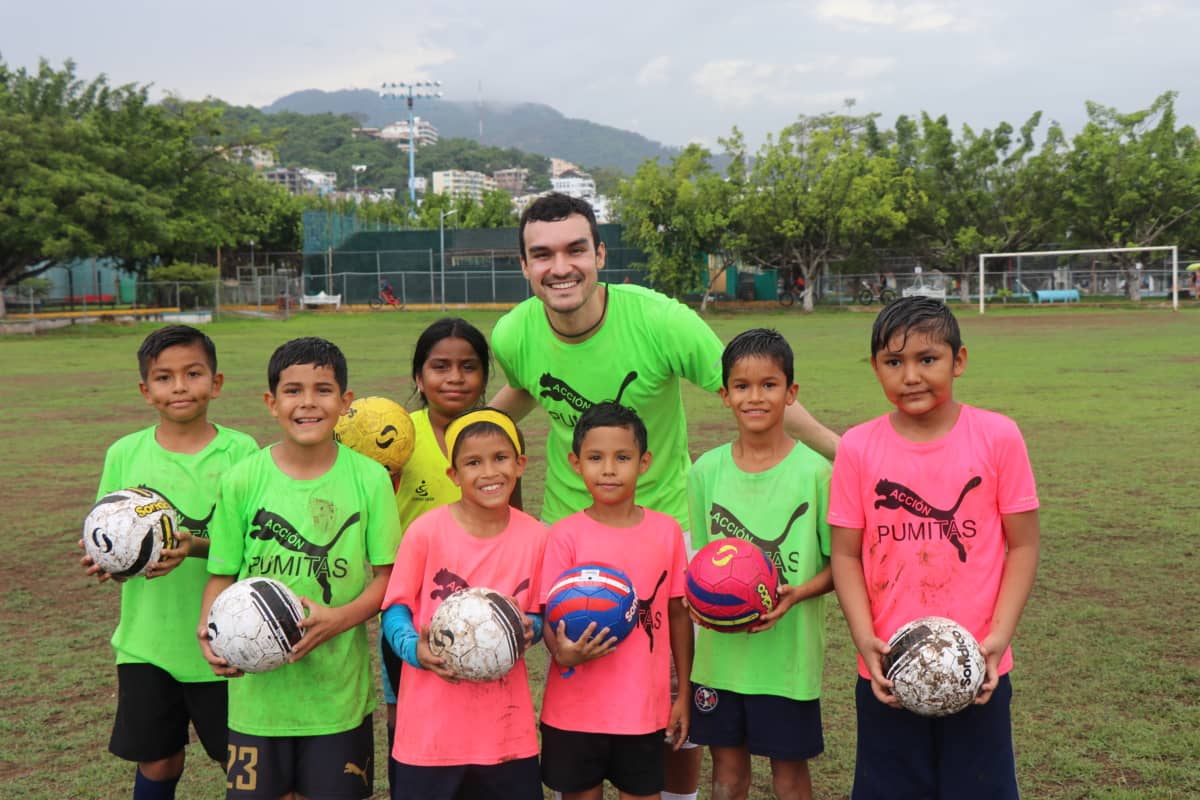
A few weeks ago, I linked back up with Victor, my trusty contact in Puerto Vallarta, Mexico. When it came to youth sports in the area, Victor was always keen to share resources in order to create a level of parity within the various leagues.
“Hey bro, there’s this group called Accion Pumitas out here – I told their coach, Julio, about what you do and I think it’d be awesome for you guys to work together, if you’re interested,” he said.
That’s all it took. Then, I booked my flight and the rest was history.
I sent a text Coach Julio’s way about a week before my trip asking him for a wish list of items he or the team might need. I then cross referenced that list with whatever we had in our inventory, and set it aside for him and the kids.
“Well we always need soccer balls,” he said, no surprise there.
“How about cleats?” I asked, excitedly gathering some pairs from the unit. Some brand new, others in excellent condition, such as Adidas Predators, Mercurial Superflys, CTR360s, Puma Evospeeds. They were beautiful and I’m telling you, if they were my size they’d be mine; that’s how nice they were!
Needless to say, I was stoked for the niños. I arrived in Puerto Vallarta and quickly made my way to my usual dwelling place, a tent near Club Vallarta. I went to the same restaurants as I did about four months ago, saw the same people, and supported the same small tiendas. It all felt very familiar and that familiarity brought about a sense of comfort and belonging. Adding to that sense of belonging was a visit from Profe Julio and his wife, Profe Miriam.
They had dropped by to pick up the cleats so they could select their new owners based on need. Profe Julio also grabbed a bag of soccer balls to bring back home and inflate – to alleviate a little bit of the burden that my 61 deflated soccer balls had left me with.
Profe Julio’s team at Accion Pumitas provides high-level football training for kids from a variety of different socioeconomic statuses. Some kids come from very wealthy families, while others have it much more difficult. The latter have to arrive at practice by taking two, sometimes three buses. Some kids grow up in single-parent households, others are being cared for by abuelas because their parents aren’t in the picture any longer, and sadly like many of our beneficiaries – some kids have lost parents in the past two years due to COVID-19.
As we sat at my makeshift dining table in my tent, I watched as Profe Julio gushed about his team. He talked about some of the coolest experiences they’d shared together and pulled up photos on his phone to relive memories, even if just for a moment. His favorite of the bunch was renting an autobús and taking his entire team to a tournament in Ciudad de Mexico at the storied Estadio Azteca.
“Tell me Profe, why Pumas? We aren’t even close to Mexico City,” I questioned.
“So we are actually originally from el Distrito Federal (el DF),” he shared, recalling their affinity for Pumas ever since they were kids.
Hence the team name, Accion Pumitas – an ode to their favorite Liga MX equipo.
We did have some common ground since Coach Julio had actually come through the Pumas coaching system and then obviously the program we had held back in February alongside Steph and Marz from Pumas Femenil.
Wednesday rolled around and it was time for our first session of the week. Coach Julio’s teams usually practice around four or five times per week for three hours in the evening. We worked things around with some mixed groups just so that the kids who needed cleats would be able to pick them up at training that day. We got to the field early, around 4:35 for a 5 o’clock session.
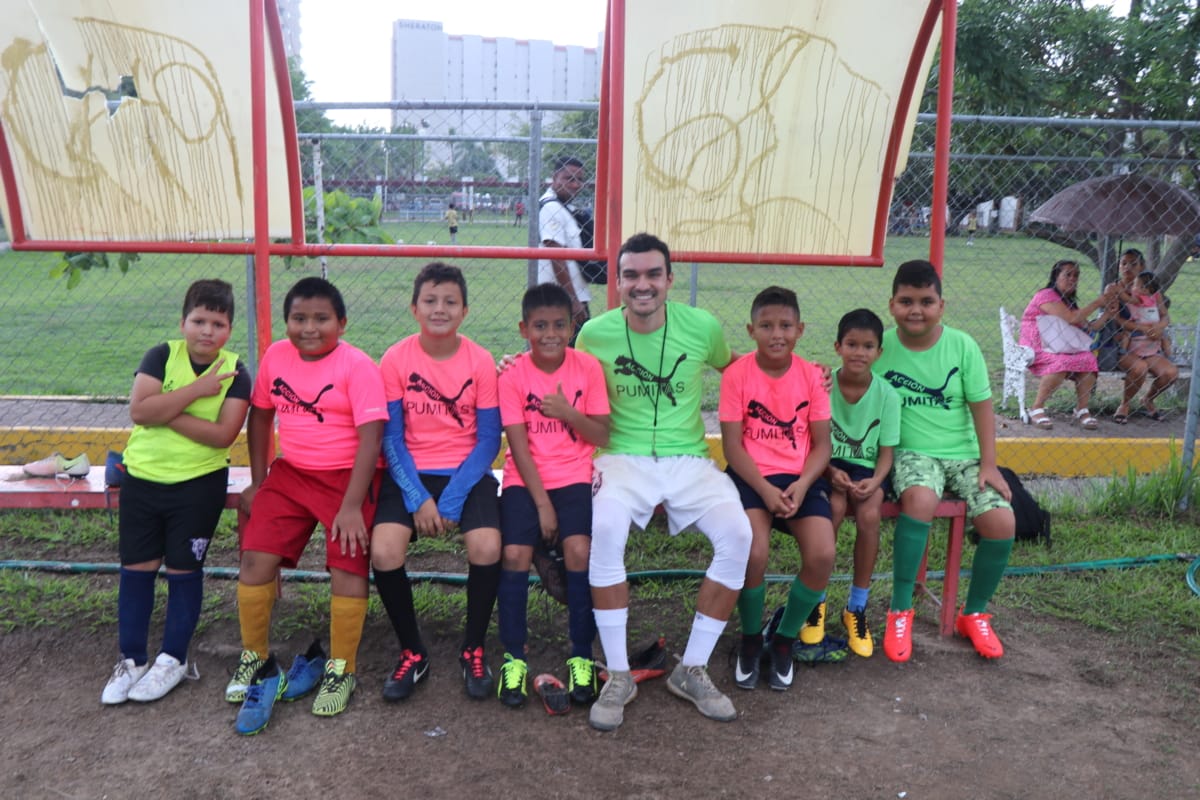
There were already three or four kids waiting eagerly, donning their Pumitas jerseys, which was the same one that I was wearing as a present from Profe Julio. Immediately, it was evident that the players had a tremendous amount of respect for their coaches and peers.
“Buenas tardes, Profe,” they’d say, approaching the coach with an outstretched hand for either a shake or a similar gesture.
“Hola, Profe,” they’d add, turning towards me with the same outstretched hand.
With a backdrop of tall, high-stretching mountains hugging dark clouds carrying the promise of rain, it was time to kick things off while we still could. I should add that we were getting hit by a hurricane the entire week, so there would be downpours and thunderstorms nearly every single day at odd times during the evening and night. Profe Julio gave a quick intro, followed by a few words of welcome from myself and a loud, thunderous round of applause from the players.
“Profe, why are you speaking in Spanish?” asked one kid.
“And how’d you learn that?” asked another. These questions became more than common by now.
I worked with this group of about 26 kids for the first 90 minutes. Then, for the second session I would be with Profe Miriam, Coach Julio’s wife, for a session with las pinguicas. As you can imagine given their nickname, these were the smallest of the bunch, ranging from three to five years old.
With the first group, we broke into our listening exercise, which was as well-received as it always is. A boy, Eduardo, who actually recognized me from a session in the past year with Club Vallarta took over for a round, and then I allowed Coach Julio a go at the fun. He laughed heartily, throwing in his own commands I’d never even thought to use before.
“¡Nariz!” he yelled.
“¡Nariz… de su campanero!” he yelled next, receiving a huge laugh from the team.
Mixing it up even further, he would do things like call on the kids to touch both their nose and their ears at the same time. I made sure to take notes as I knew I’d have to incorporate this in the future, especially after seeing how well the kids received it. Coach Julio and I planned to trade drills, so I was expecting him to run something after the listening drill, but he was happy to defer the spotlight to me, asking if I’d like to run a second one.
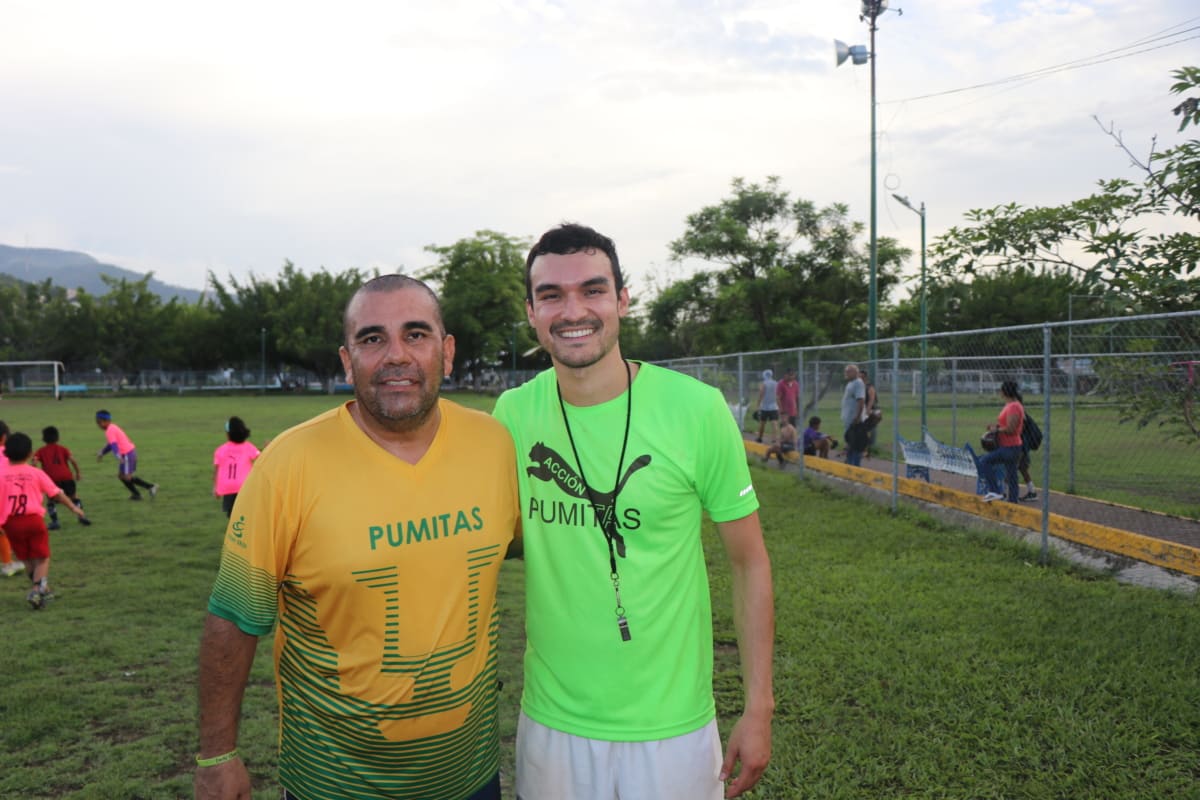
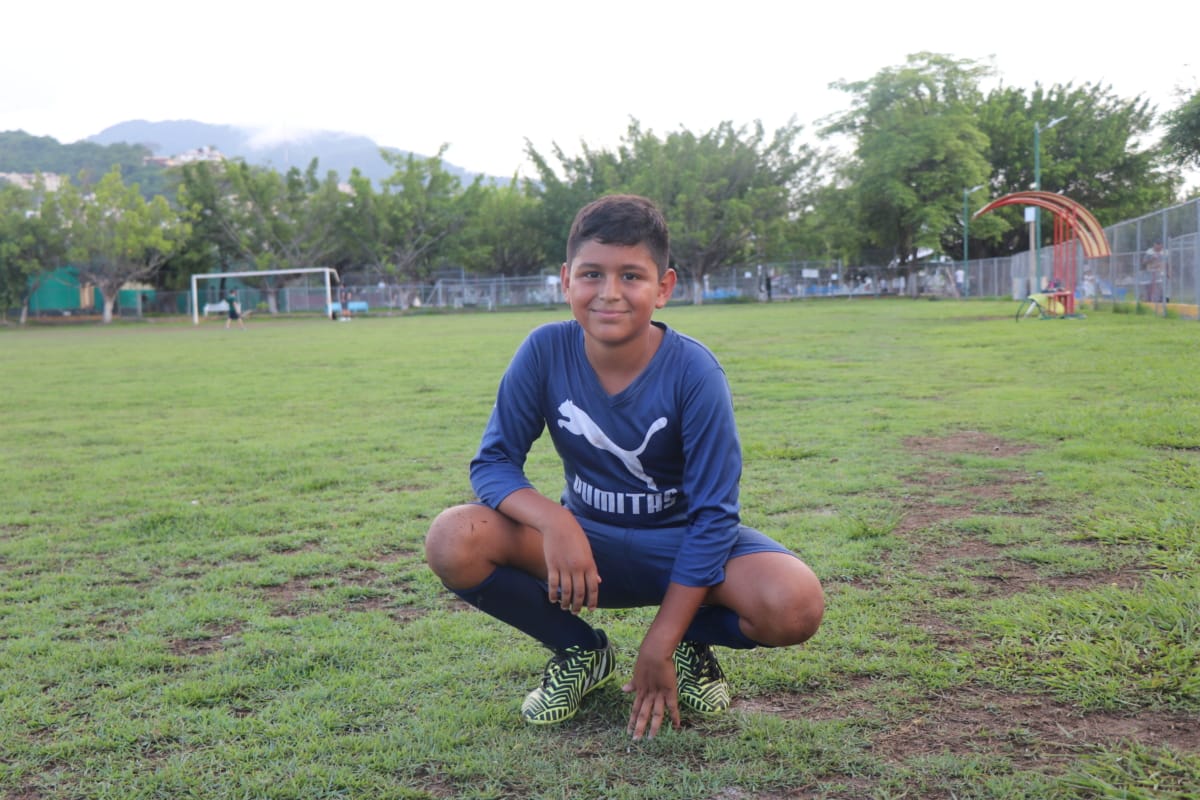
“Sure!” I responded, calling the kids to circle up. “Ok we need two teams of 13!” I yelled.
Thirteen kids would be in the center of the circle and the other 13 would be lining the outside of it, each with a ball. This drill came straight from my youth, so I was happy to pass it along to the next generation. It’s basically the same as our ball control grids, but the inclusion of a circle forces the kids to look at things like spatial awareness and pushes a need for greater communication. We started off with basic push-passes. A player inside the circle would run to one on the outside and perform push passes with both the left & right foot, then, they’d turn and find another player outside the circle on the opposite side, navigating through crowds and effectively using their voice to call out for a pass.
Sure, there were a lot of moving parts, but that’s the beauty of it isn’t it? After about 60-90 seconds of this, we switch teams so that those on the outside have a chance to practice their technique. Following push-passes, we switched to volleys. Then from volleys we went to headers. Then for the last one, players had to receive a pass, turn with the ball into open space, dribbling with their head up to find a person on the outside of the circle without a ball to distribute it to. All very practical things that easily mirrored an in-game situation.
Once I’d wrapped the drill up I asked Profe Julio to take over with one of his own as Profe Miriam called me to the sidelines to meet a group of 8 or 9 kids who would be receiving new boots. One or two of them had arrived to training wearing only tennis shoes rather than cleats. They all sat down excitedly on the opposite side’s bench, as Profe Miriam carefully took out all of the pairs from a large bag I had brought with me.
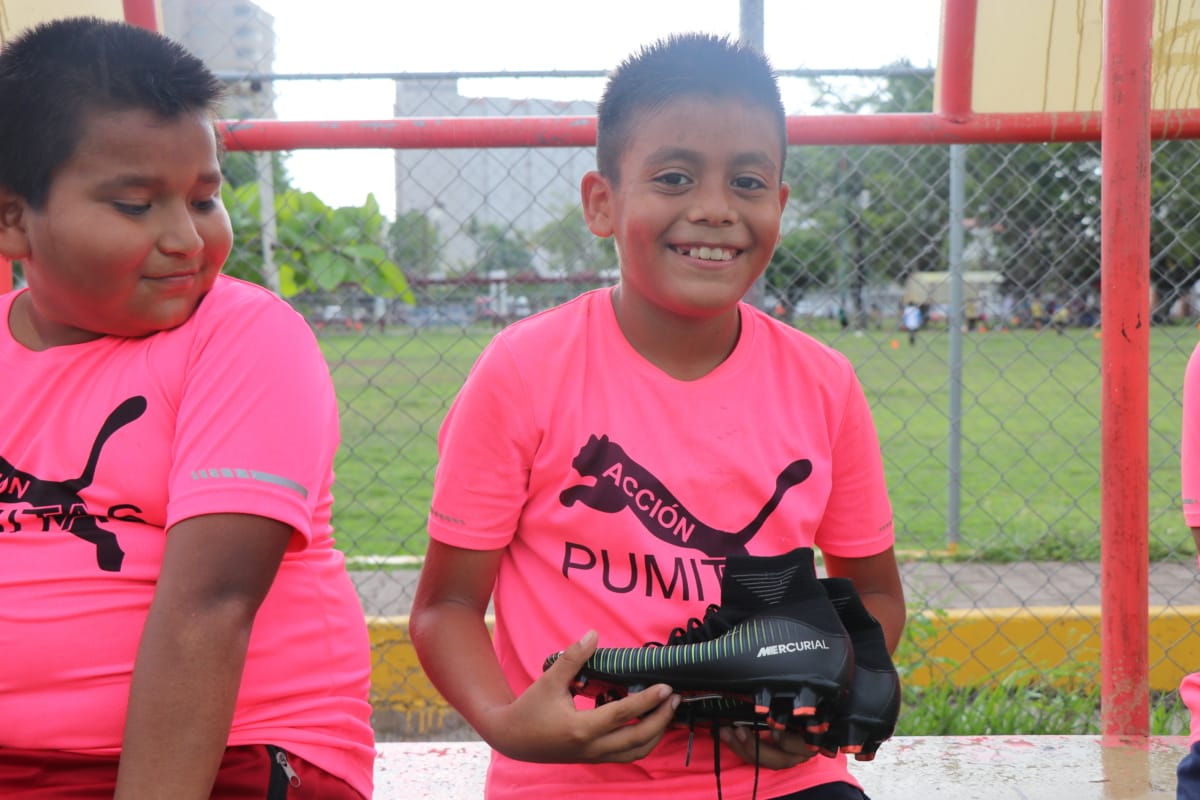


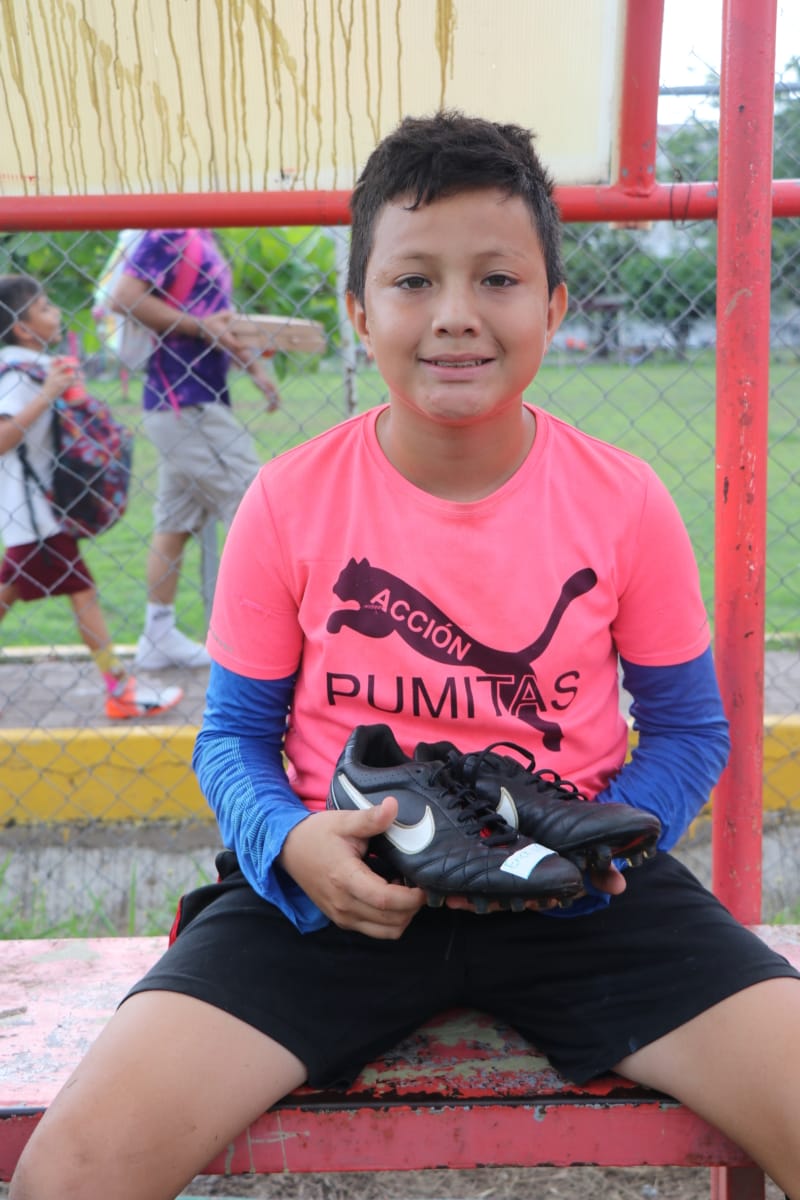
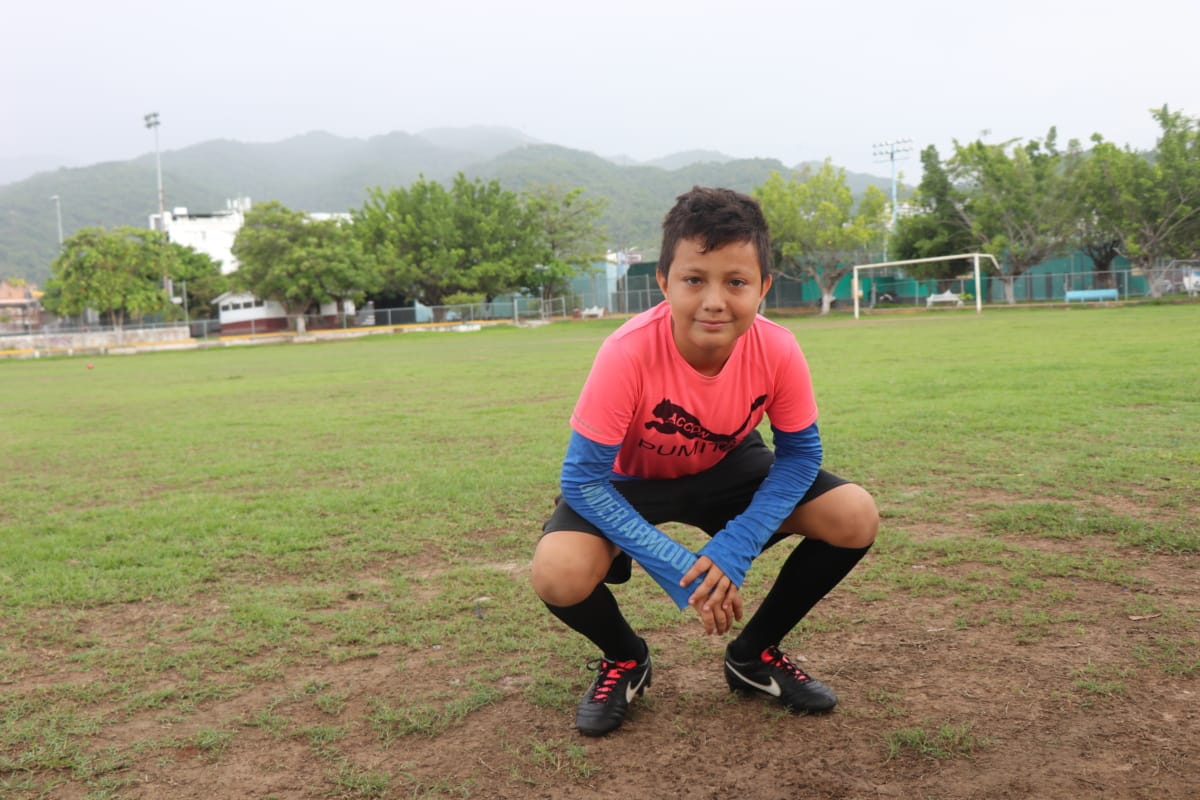
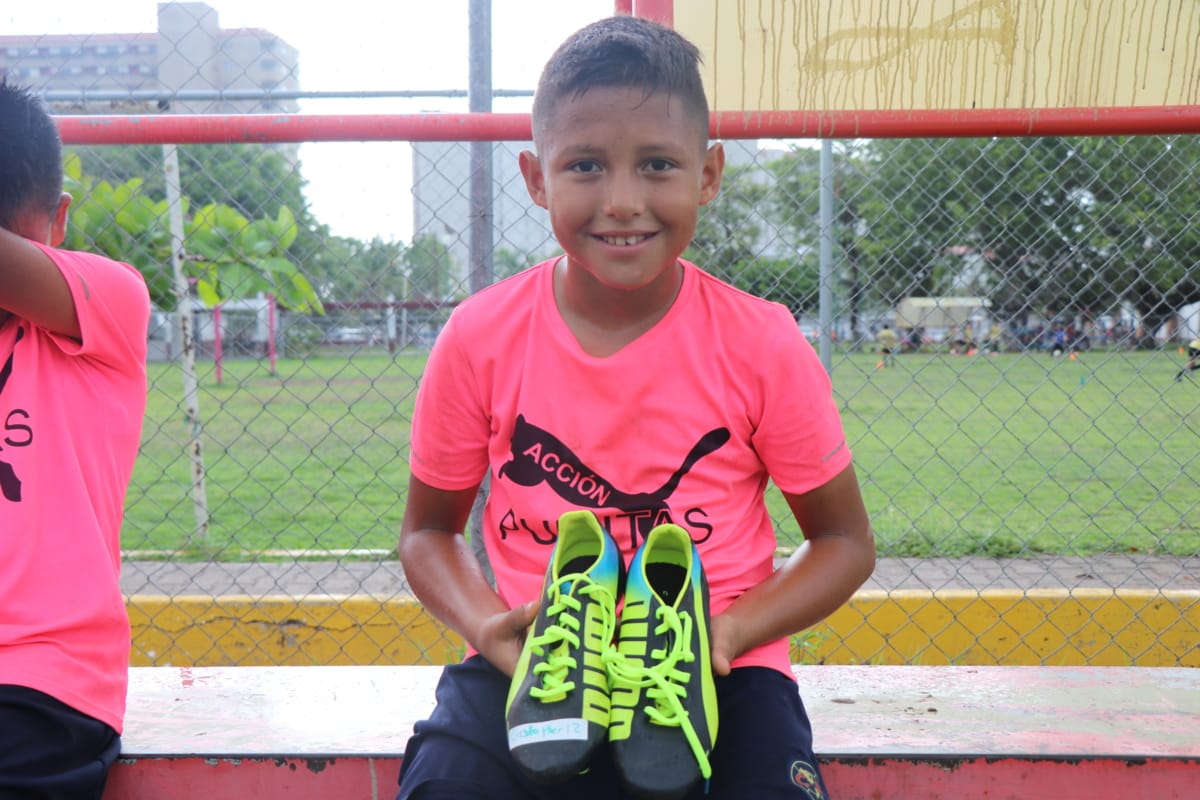
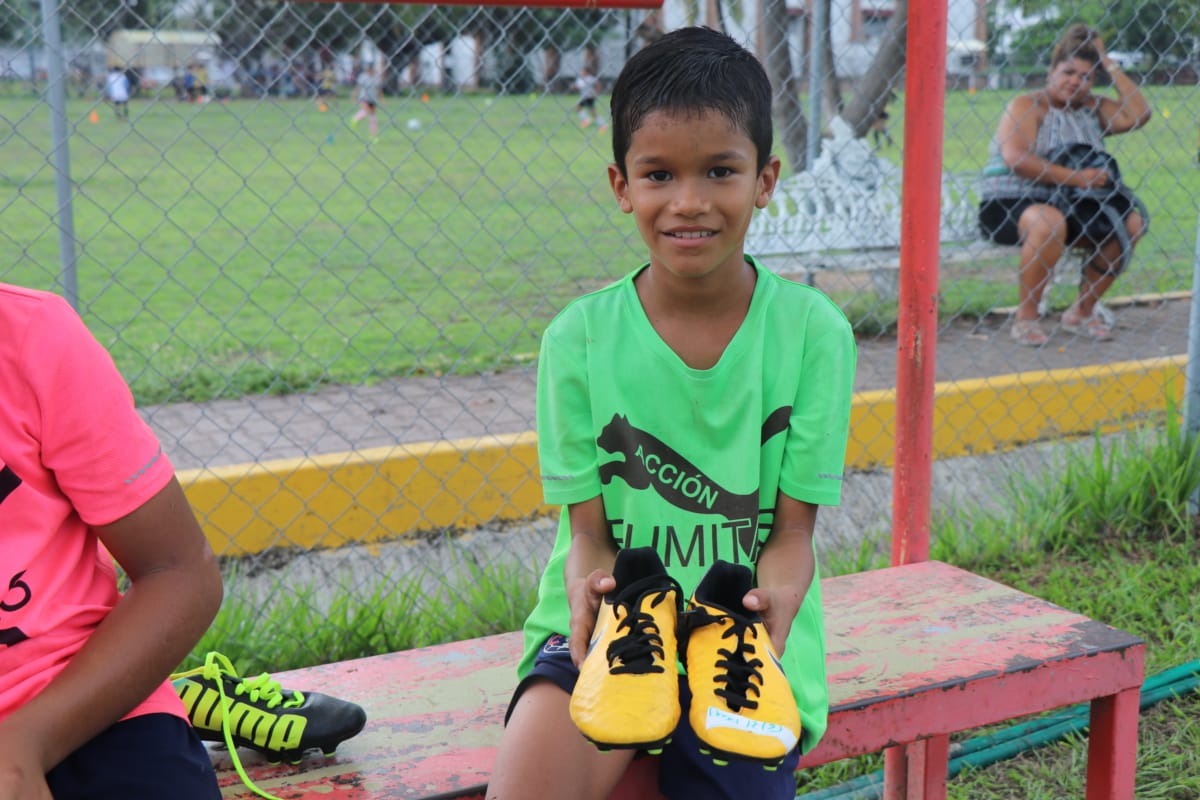
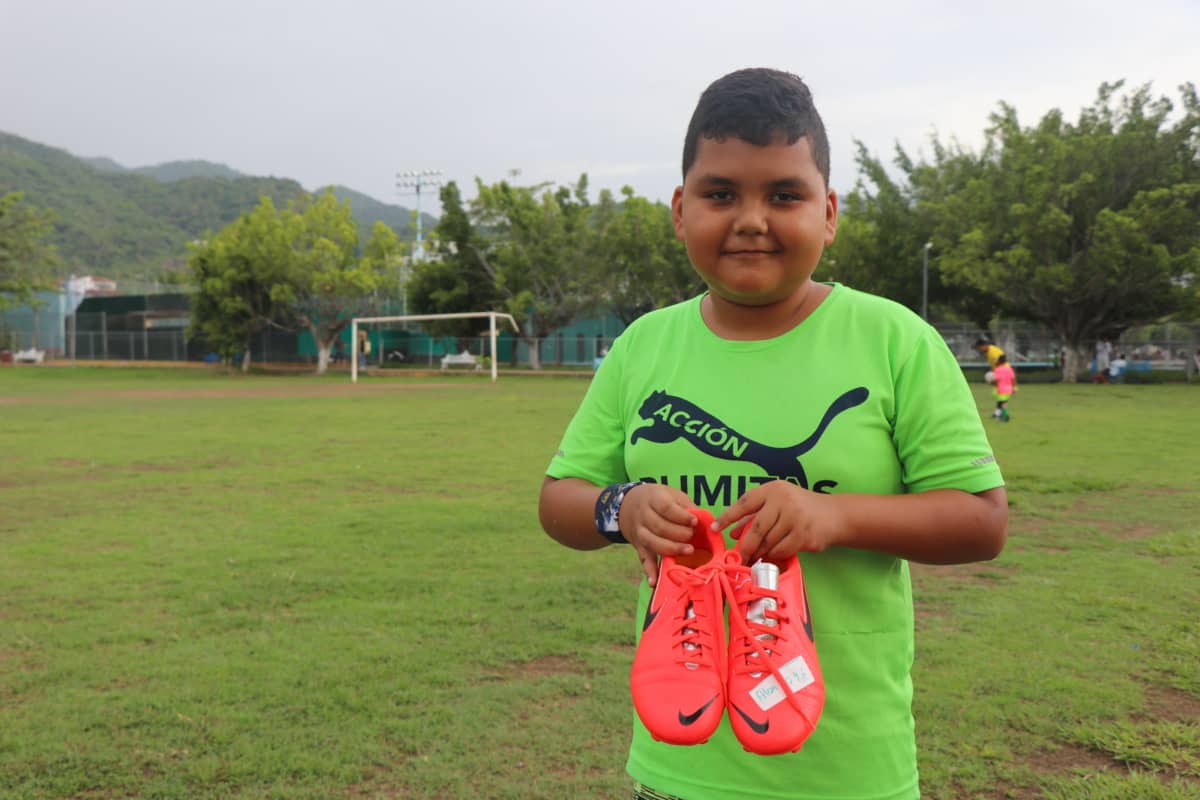
“Oooh” I heard, as their eyes got big.
Luckily, thanks to Profe Julio stopping by on Tuesday we were well-prepared, so each pair was labeled with a piece of tape, the shoe size, and the potential owner of it – as long as the fit was correct. I pulled out a pair of brand new CTRs and saw a look of pure joy from the boy whose name matched their label. Similarly, I passed a pair of Puma Evospeeds to another boy and he quickly threw them on his feet, hoping they’d be a perfect match.
“¡Pues somos pumas!” I laughed, pointing at the large “PUMA” mark branding the inside of the boots.
His teammate quickly exposed him – “Yes, we’re pumas but he likes Atlas” he said with a sly grin.
As soon as all the boots had new owners, I made my way back onto the field as did the rest of the players. With the field all wet and muddy from that rain I spoke of earlier, I decided to break into our one-versus-one drill towards goal. The kids loved it, making for a spirited competition. Keeping the attack v defense motif intact, we moved to a drill from Coach Julio’s book, focusing on defensive spacing – when one person presses the ball, the other holds back to provide another layer of support and protection.
I took charge of giving the kids an example, receiving the ball and cutting past the first defender then back across the second before slotting the ball into the far corner of the net.
“Profe! Profe! Profe!” yelled the kids, making me feel like a rockstar, so you already know I had to put on a show for them. Profe Julio had shared earlier that a lot of kids in this age group have immense potential but lack concentration. Some deal with behavioral issues, so he’d been trying his best to use the game as a vehicle to improve things in those two arenas.
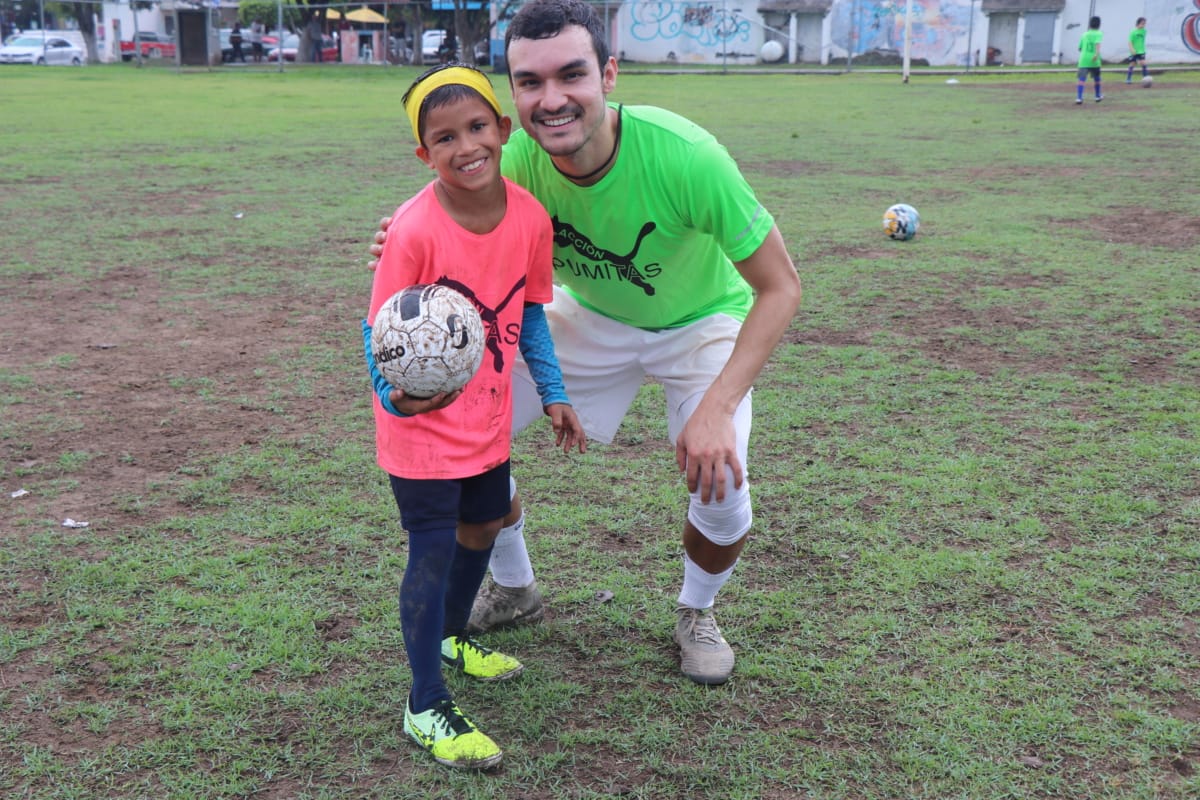
By now, 6:30 had hit and it was time to work with the pinguicas. If the other group had trouble concentrating, this group promised to be 10 times harder. Kids this age are distracted by the slightest thing, a bug on the field, a plane in the sky, a cloud of rain, it doesn’t take much! Despite that, it was amazing to watch Coach Miriam at work. She was a wiz. Lots of positive reinforcement and fun little games. Lots of examples and walking kids through each technique, which is how it should be at that age.
The first game was wolves and bunnies. Our group of 16 split down the middle. The wolves tried to steal the ball from the bunnies until there were none left. I ran a couple drills of my own, but assured Coach Miriam that I was more interested in spectating, hoping to take some notes for future sessions with an age group this young. After some passing, dribbling, and shooting drills, it was time for mano o cabeza. I won’t even lie, these kids were better than the older group! Their focus was absolutely locked in for this one, maybe because there were prizes at stake!
We ran three rounds with five winners total. Everyone was leaving with a bracelet, and then our five prizewinners got their choice of some appropriately-sized Sondico size three balls. Coach Miriam called the kids and their parents in, just to explain that not everyone would be receiving a ball, but that we had played a game in which every kid had an equal opportunity to win, and would be giving soccer balls to the winners of that game.
“Profe! Let me show them the game!” yelled an animated young boy, stepping in front of the parents to run an individual round of mano o cabeza.
“So that was the game, it was designed to work on concentration and listening,” explained Profe Miriam as we called forward the five winners to receive their prizes.
“Profe Esteban, do you have a preferred type of food?” asked one of the parents. “Like seafood, something like that?”
“It’s just that we want to thank you for your visit and for helping the kids,” she explained, but was unsure if I had any food allergies or anything.
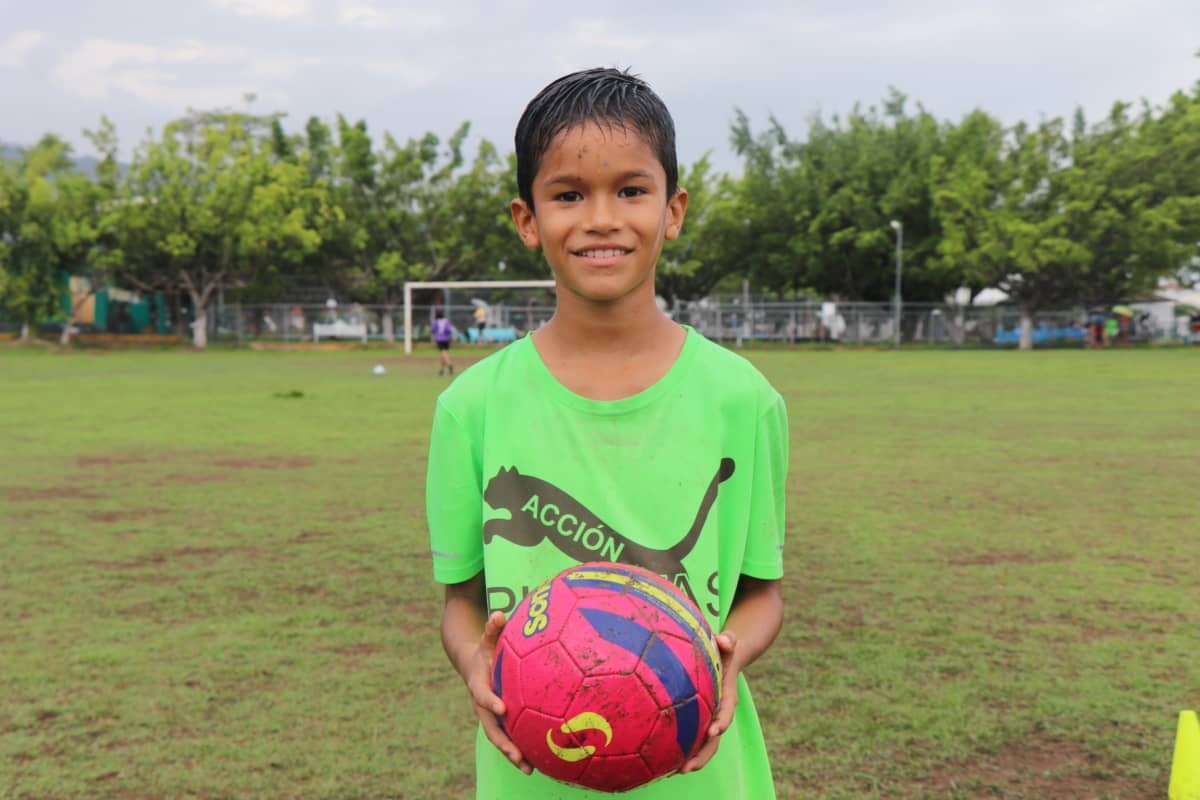
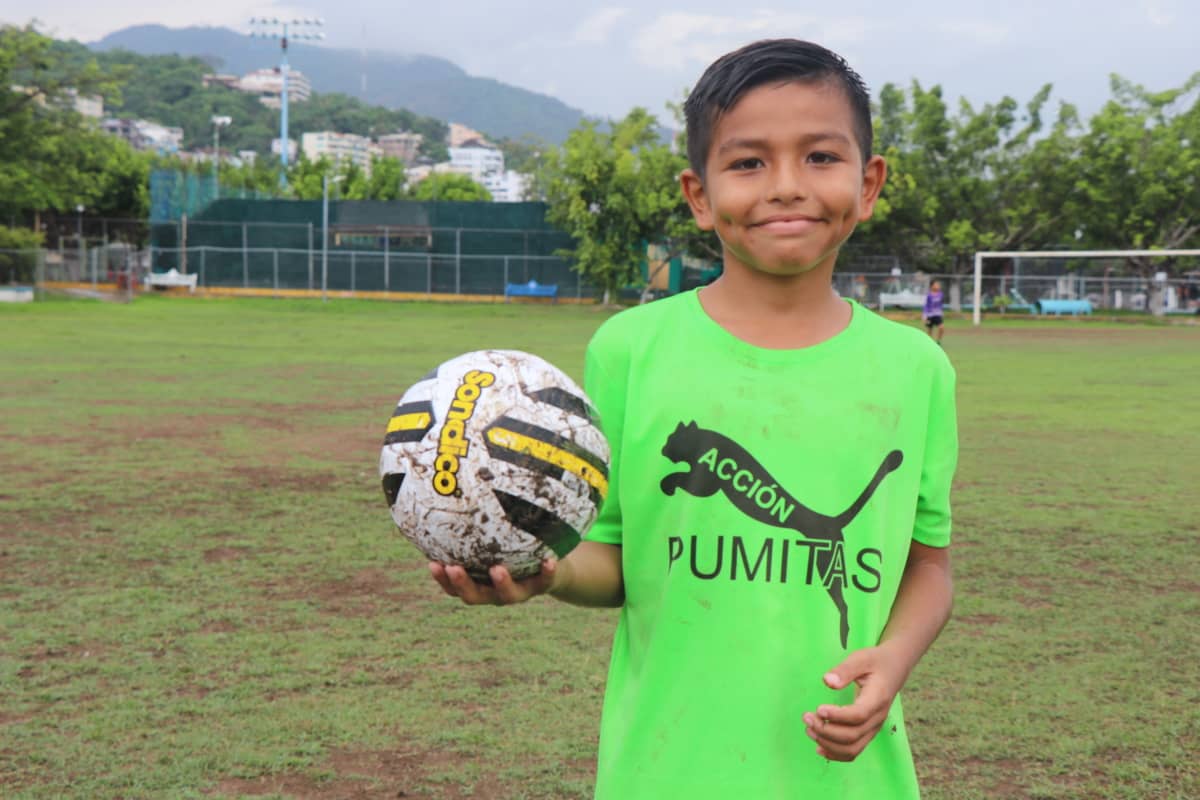
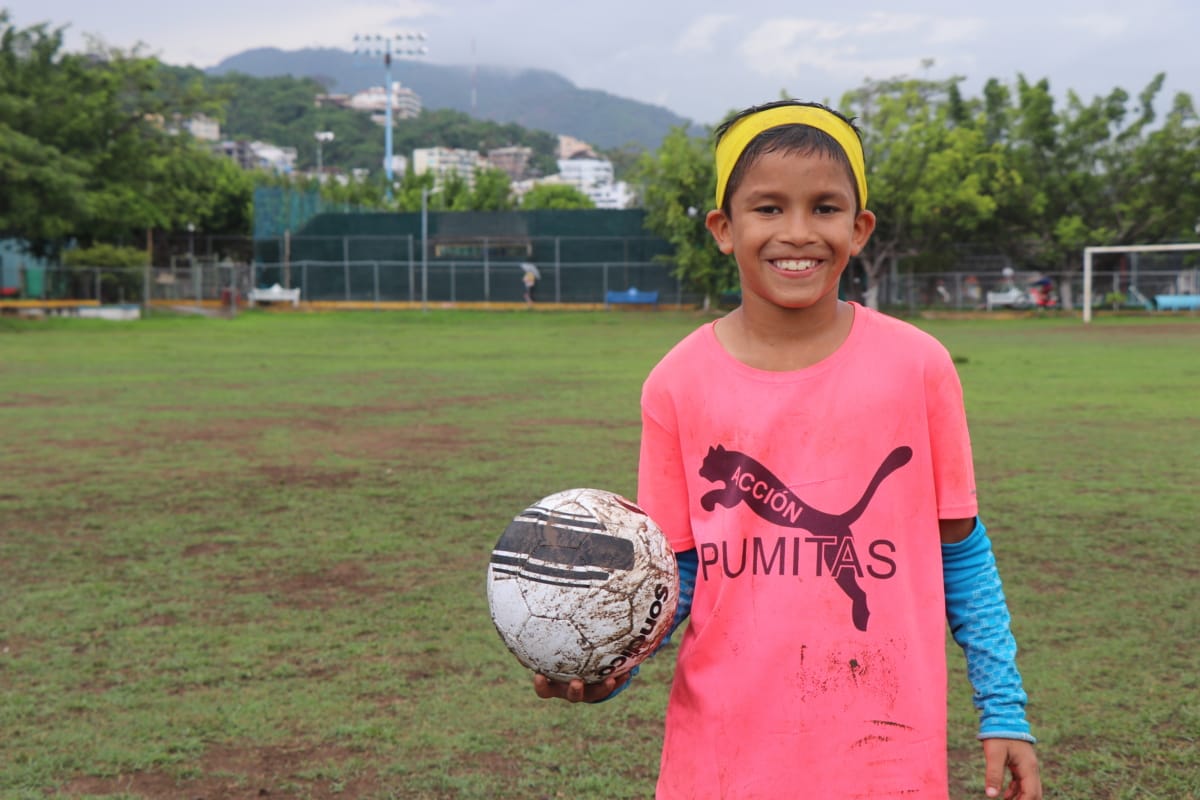
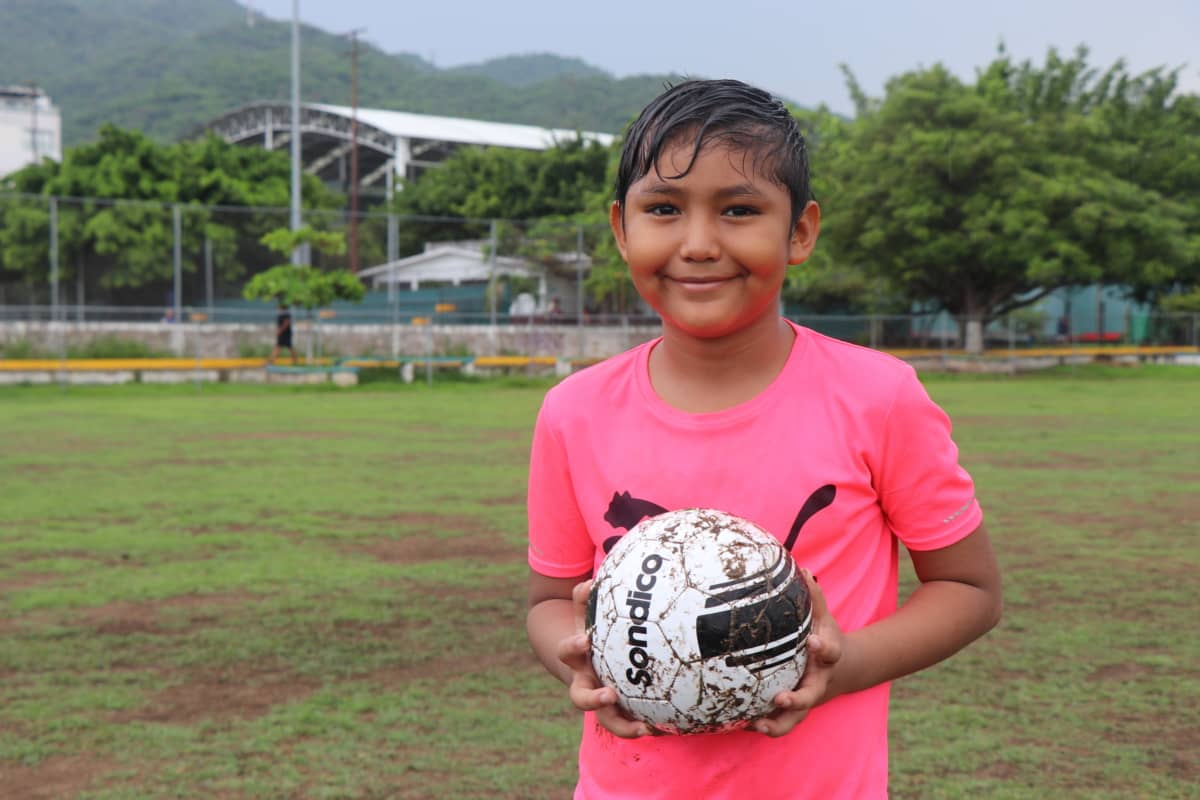
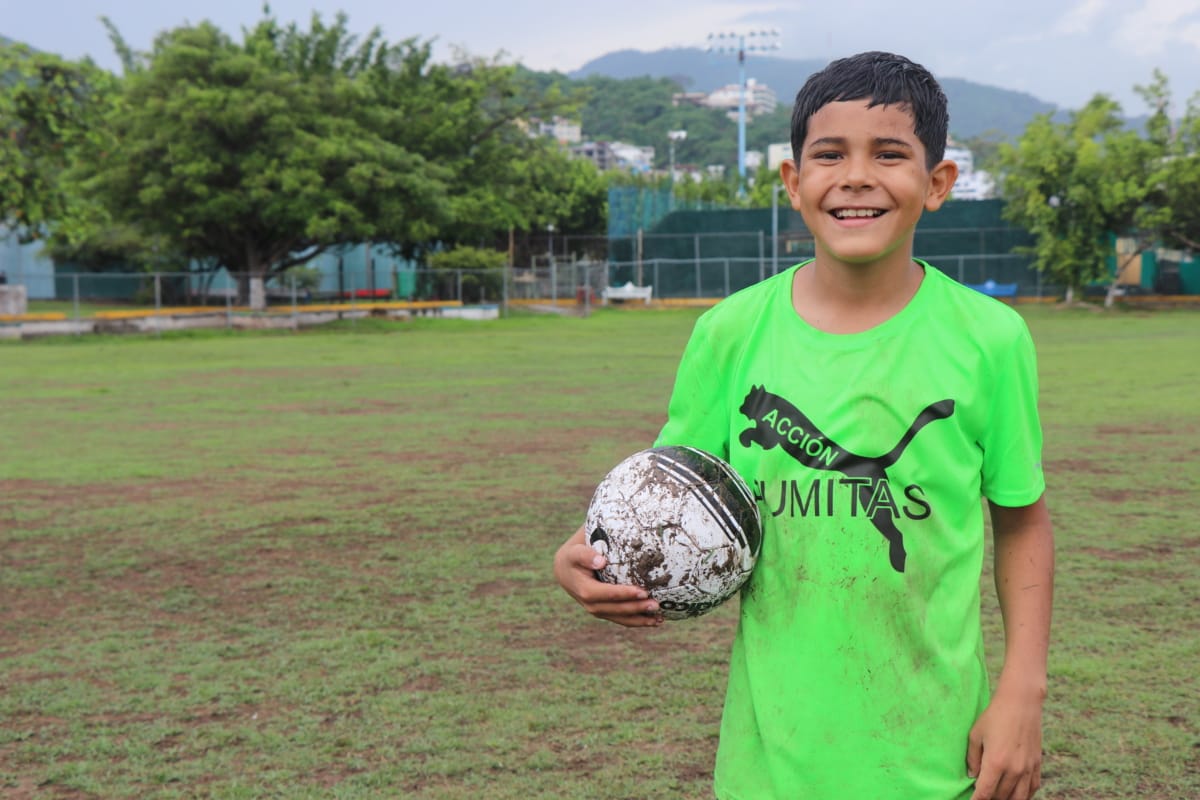
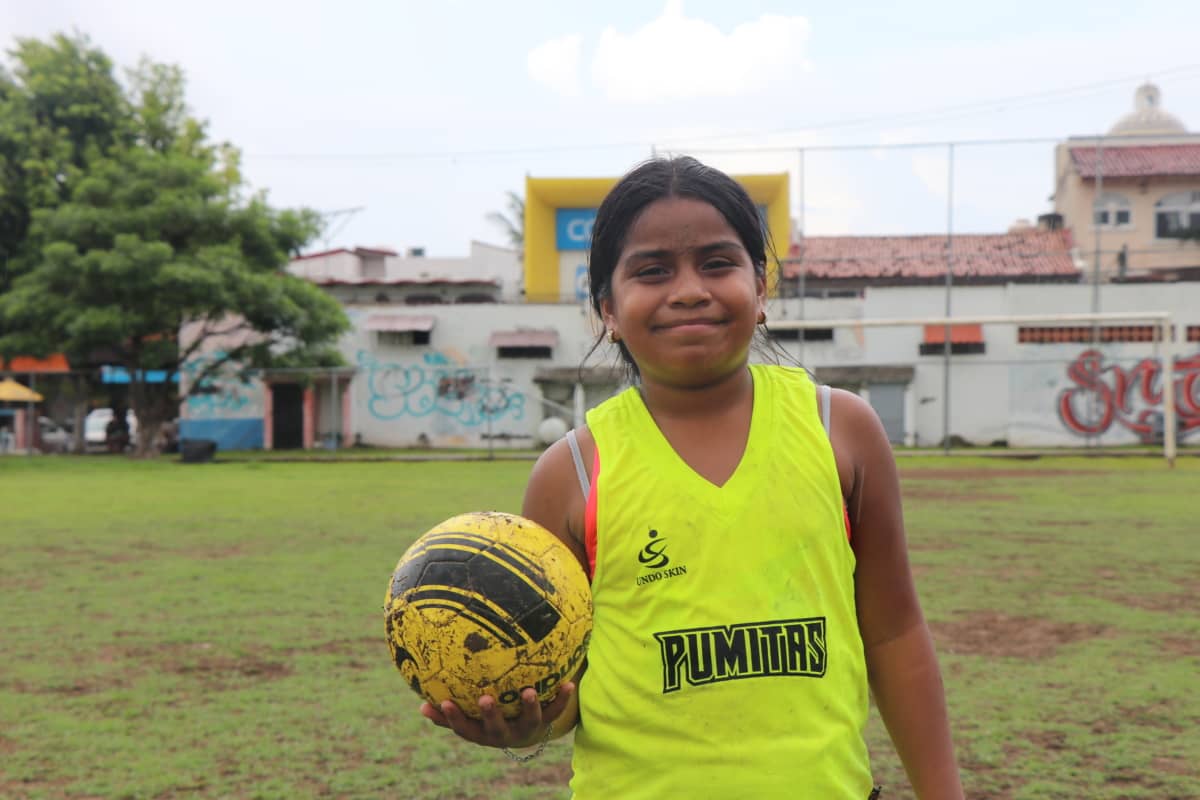
“Oh that’s so nice!” I said gratefully, sharing that I’d just be happy with anything.
We wrapped up the second session and I made my way to the sideline, where two boys were busy juggling. They were from the oldest Pumitas team, who was practicing on one half of the field with Profe Julio while I worked with las pinguicas.
I approached the two, one was named Pavel, the other sporting a jersey that read “Uly”. Profe Julio had told me a bit about Pavel earlier, that like many he was extremely talented but distracted, making it difficult for him to reach his full potential both on and off the pitch. I immediately thought about making him a captain for our planned session on Friday, to help instill some responsibility and leadership.
For the meantime, I took him aside for a little charla.
“Listen Pavel, I’ll be back here on Friday for a session with you and your team, but I’m going to need your full attention and all your energy. Can you do that for me?” I asked. He nodded his head in agreement.
From there, Pavel, Uly and I continued to chat as we juggled the ball between us. Pavel had been trying to do a head stall so I gave him some tips and then taught him how to stall it on his neck. Him and Uly requested I do a doble vuelta al mundo, so I threw down three or four before giving Uly a chance to perform one of his own.
At this point, it was time to go home. We were supposed to practice until 8 p.m., but it was already 8:45 p.m. Profe Julio, Profe Miriam, and I all went out to the best Torta spot in the area and enjoyed an incredible local meal and some more conversation.. As we neared my AirBnB, following a spirited conversation about football, the Mexican national teams, and more – I took another moment to thank Profe Julio for everything. I extended my gratitude for the food, helping bring today’s session to life, and all the things he did for the community and for the sport in general.
“On the contrary, thank you for taking the time to be here with the kids, I can’t tell you how excited they were,” he said – a closing thought before we were to link back up on Friday.
